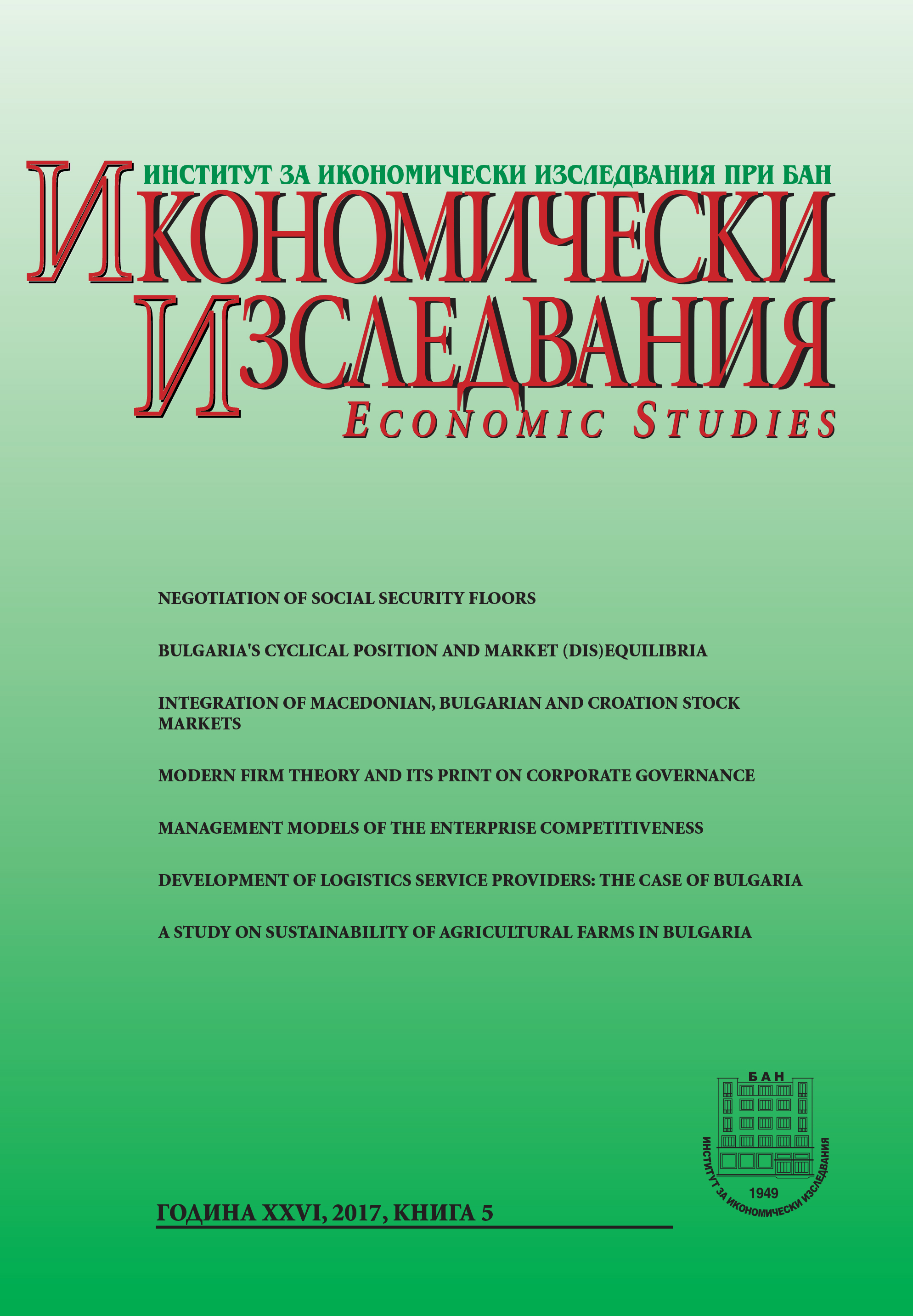Modern Firm Theory and Its Print on Corporate Governance
Modern Firm Theory and Its Print on Corporate Governance
Author(s): Plamen TchipevSubject(s): Business Economy / Management
Published by: Институт за икономически изследвания при Българска академия на науките
Keywords: JEL: D21; D23; G30
Summary/Abstract: A number of previous projects on corporate governance, accomplished with the participation of the author, pointed out the fact that the set of instruments, regulations and good practices of corporate governance are a product of a more or less predetermined choice; of the firm specific creation and functioning in a certain economic system. Even more, the very firm, (called in general corporation or, sometimes, company with the same meaning) - being itself a subject of analysis and influence by the corporate governance is also a “datum”. There are many hypotheses on the reasons and nature of these specificity, starting from the different legal system applied in the different countries, through the varieties of corporate finances systems, to the nature of the firm in general. The answers are not quite satisfactory. The current paper studies in a broader methodological frame the characteristics of the modern firm, which define the features, interact and determine the choice of a model or system of corporate governance.The analysis starts with the relation of the corporate governance to the institutional nature of the firm. The second section outlines the problems of defining the firm (the “paradox of the firm”) in the standard neoclassical economics. The third section draws special attention to the criticism of the transaction costs approach as defining the firm. The fourth section shows its contradiction with the other axioms of the classical and neoclassical economic paradigms and holds the thesis that the firm cannot be understood that way but only through its institutional nature. In the fifth section, with the help of the General Systems Theory, the firm is set in a wider frame of its relations with the market in general and the exchange of value (or utility, depending on the chosen explanatory model). The last section outlines the final conclusion that the firm (corporation) functions (through the value/utility mechanisms) as a base unit of distribution, which determines its contribution to the whole set of goods. Thus, the categories firm and corporate governance are in certain mutual order, and it creates the mentioned predetermination. The latter requires and suggests certain solutions for corporate governance adequacy. More concrete answers are also offered, for example to the question why the “stakeholders” cannot (and should not) be an object of the corporate governance.
Journal: Икономически изследвания
- Issue Year: 2017
- Issue No: 5
- Page Range: 80-101
- Page Count: 22
- Language: English

